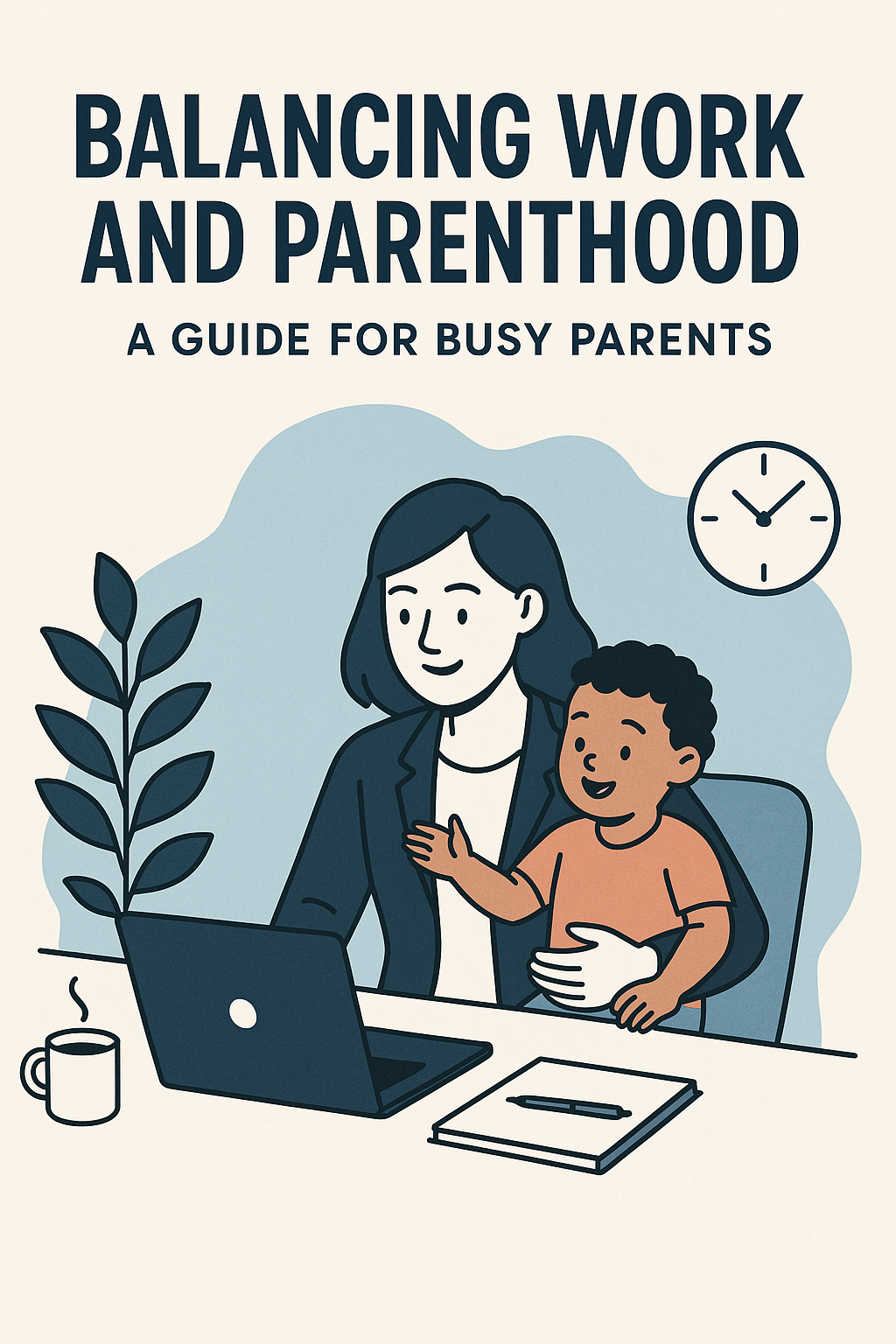
Balancing Work and Parenthood: A Guide for Busy Parents
Introduction: Finding the Sweet Spot Between Work and Family
Being a parent and maintaining a career can feel like juggling two flaming torches—both requiring attention, both demanding your energy, and one wrong move could lead to a disaster. Yet, it doesn't have to be that way. With the right strategies in place, balancing work and parenthood can be not only manageable but incredibly rewarding. In this guide, we’ll explore how to balance both worlds without feeling overwhelmed.
Work-Life Balance: Why It’s Crucial for Parents
Let’s face it—work is demanding, and parenting is demanding, too. But without a proper balance, you risk burnout. The key is learning to integrate both aspects of your life in a way that supports both your career and your family. Work-life balance doesn’t mean spending equal amounts of time in both areas; it’s about quality, not quantity.
Understanding the Concept of Work-Life Balance
Work-life balance refers to achieving a level of harmony between the time spent on your job and the time spent with your family. It’s about managing your time and energy in a way that allows you to be present for both your professional commitments and your personal responsibilities.
Why Work-Life Balance Is So Important
Without balance, stress levels increase, relationships suffer, and your health takes a toll. By prioritizing work-life balance, you can avoid burnout, increase productivity, and maintain stronger, more fulfilling connections with your loved ones.
Practical Parenting Advice for Busy Parents
Parenting isn’t a one-size-fits-all approach, especially when you’re juggling work and family life. But with a few practical tips, you can create a solid foundation for healthy parenting practices that will benefit both you and your child.
Effective Communication with Teenagers
As your kids grow, so do the challenges of parenting. Teenagers, with their evolving needs and emotions, can sometimes seem like a mystery. How do you effectively communicate with them when they’ve got their own world to navigate? Listening is key. By fostering an environment where open dialogue is encouraged, you create space for your teen to express themselves without fear of judgment.
Practical Advice for Raising Confident Children
Confidence doesn’t come naturally to everyone, but it can be nurtured. Encourage your children to try new things, praise their efforts (not just their outcomes), and allow them to learn from mistakes. These simple actions help build resilience and self-esteem, making them better equipped to handle the world’s challenges.
Creating a Positive Learning Environment at Home
Your home can be a sanctuary for learning, creativity, and personal growth. Whether it’s fostering a love for reading, nurturing their curiosity, or providing the right tools, creating a positive learning environment is crucial to your child’s development.
Best Educational Tools for Kids in 2025
The right educational tools can make a huge difference in your child’s learning journey. From apps to interactive toys, today’s market is packed with incredible options to help boost your child’s skills in fun and engaging ways.
Affordable Ways to Create Fun Learning Activities
Not every learning activity requires expensive tools or gadgets. Some of the best ways to encourage your child’s imagination and critical thinking are through simple, affordable activities. Think about board games, building blocks, or even nature walks. These activities not only promote creativity but also provide opportunities for quality bonding time.
Top Tips for Managing Screen Time
In an era where screens are a constant presence, managing screen time is a major challenge for parents. Too much screen time can hinder your child’s development, but how do you strike the right balance?
Setting Boundaries and Guidelines
Start by setting clear boundaries around screen time. Limit the amount of time spent on screens, and make sure that the content your child consumes is educational and age-appropriate. Encourage other activities like outdoor play or creative pursuits to keep their minds engaged.
Educational Toys: A Parent’s Secret Weapon
Educational toys are an excellent way to support your child’s development while keeping them entertained. These toys help your child learn valuable skills like problem-solving, teamwork, and creativity. So, what should you look for when choosing educational toys?
Top Educational Toys for Different Age Groups
For younger children, toys that focus on basic skills like shapes, colors, and numbers can be incredibly effective. As they get older, consider toys that challenge their cognitive abilities, such as puzzles or STEM kits. Regardless of age, make sure the toy encourages active engagement rather than passive entertainment.
How to Encourage Creativity in Children
Creativity is a muscle that can be developed. Encourage your child to explore new hobbies, take risks, and express themselves freely. Whether it’s through art, music, or writing, creativity plays a vital role in your child’s cognitive and emotional growth.
Activities to Boost Creativity
Set aside time for creative activities like drawing, painting, or building things with LEGO. Encourage them to create stories or compose songs. The goal is to give your child the tools and space to create, which can help them develop a growth mindset and confidence.
Conclusion: Achieving Harmony in Your Busy Life
Balancing work and parenthood isn’t about perfection—it’s about finding harmony. By setting clear boundaries, being present, and supporting your child’s growth, you can successfully navigate the challenges of modern parenting. With the right strategies, you’ll find yourself enjoying both your career and your family time more than ever before.